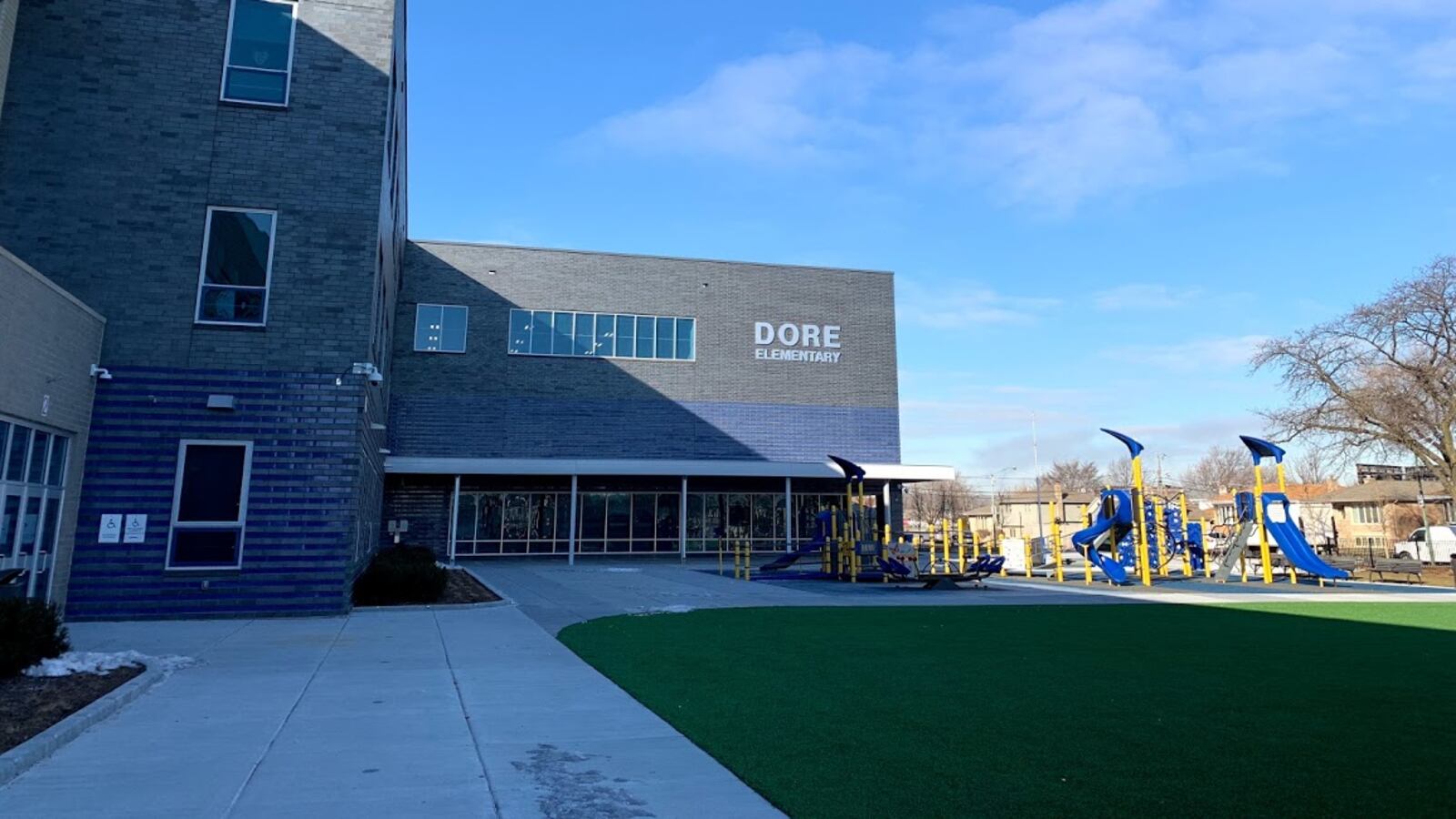The same day that Chicago’s school board authorized a $7.7 billion budget and approved of borrowing billions more to pay for building upgrades, a longtime civic watchdog issued a report saying the district is sorely in need of a long-term financial plan.
While the Chicago Public Schools’ finances are in “much more stable shape,” compared to just a few years ago, the group had “concerns” about the district’s long-term fiscal health, Civic Federation President Laurence Msall told the school board Wednesday. While voicing support for the school system’s single-year 2019-2020 budget, Msall stressed the need for the district to take a longer view and to do so in the public eye.
“We urge the board of education to work with staff on a multi-year financial plan,” he said. “Chicago will again rely on short-term borrowing [for day-to-day operations], the teacher pension fund remains severely underfunded, and while costs continue to grow, the overall student enrollment continuing to decline.”
Turning that around won’t be easy, he acknowledged, saying, “there are very few easy solutions [to the problems] that face the district.”
In a presentation on Wednesday, Chicago Public Schools Treasurer Walter Stock told the school board that the district is in better financial health than in past years, and that he was asking them to approve another round of long-term borrowing — a $1.9 billion bond issue — to pay for critical building needs. Some $650 million of those loans would go to pay off projects that were part of a capital plan announced last year by then-Mayor Rahm Emanuel; another $550 million would go to pay for hundreds more projects trumpeted earlier this month by Mayor Lori Lightfoot. That would leave nearly $700 million to use for projects in 2021 and beyond.
“We have critical building needs,” said Stock, who was not immediately able to provide a new total for Chicago district’s outstanding debt since the district recently made some payments. As of June 30, its long-term debt totaled $8.4 billion, making it the second most indebted school system in the country (after Los Angeles).
While the district’s bond rating has improved recently, it remains in junk status, which ratchets up the amount of interest it pays when it borrows money from the capital markets. That’s money diverted from the classroom that could otherwise be used on things like teachers’ salaries and supplies.
Msall also spotlighted a few unknowns weighing on the district, chiefly how it will pay for the pending contract with the teachers’ union and how the district will follow through on hiring necessary support staff it has promised going into this school year.
The number of support staff, who include social workers, nurses, and special education case managers, and the timeline for hiring them have been an issue of disagreement between the union and district leadership.
The union has stressed Chicago’s improved financial position to bolster its arguments for why teachers should get bigger cost-of-living raises than the city is currently offering. Mayor Lightfoot’s latest offer would give teachers a 16% raise across five years. The union has said that’s not enough.
But there’s a fundamental tension there. Chicago Public Schools still only receives about 64 percent of what it should from the state, according to the revamped funding formula that determines “adequate” spending for each district. So while it’s getting more money each year, there are still financial pressures — and when more money goes toward salaries, less can go into programs that also support schools.
“These are challenging questions,” said Carrie Stewart, a partner at the firm Afton Partners who works as a financial consultant to public school districts, not currently including Chicago Public Schools. “It seems that much of supports the union is asking for are things that our students need and deserve – these are things students in other districts benefit from. And yet here we are at 64 percent of funding adequacy – there is only so much that CPS can afford with the funding available, and the recent independent report (from the factfinder) has essentially confirmed that.”
There’s a tension, too, in what’s left to invest in equity measures. “There may be very good arguments for why every teacher in the district needs an increased salary,” said Benjamin Boer, the former state policy director at Advance Illinois and a public finance consultant. “But the problem is, there is evidence that the district has an equity issue. That there is not enough money for the different needs of different schools, and if you’re sending out money equally to all schools because you are raising salaries, it gives you a lot less flexibility on the equity front.”
In addition to supporting the proposed spending plan for this coming school year, the Civic Federation report released Wednesday praised more stable footing for the teachers pension fund and transparency measures, such as the board’s decision to start livestreaming its meetings and provide more frequent public financial updates.
Besides the long-term debt total rising, other concerns raised in the report include the continuing enrollment decline amid increased spending on personnel, the continued reliance on short-term borrowing to pay for day-to-day operations, and the need for more transparency around why some schools are selected for capital upgrades and others are not.
The need for transparency around capital selections came up in a series of public hearings last week. Despite lingering questions, the school board still greenlighted the capital plan — and the larger budget — on Wednesday.

